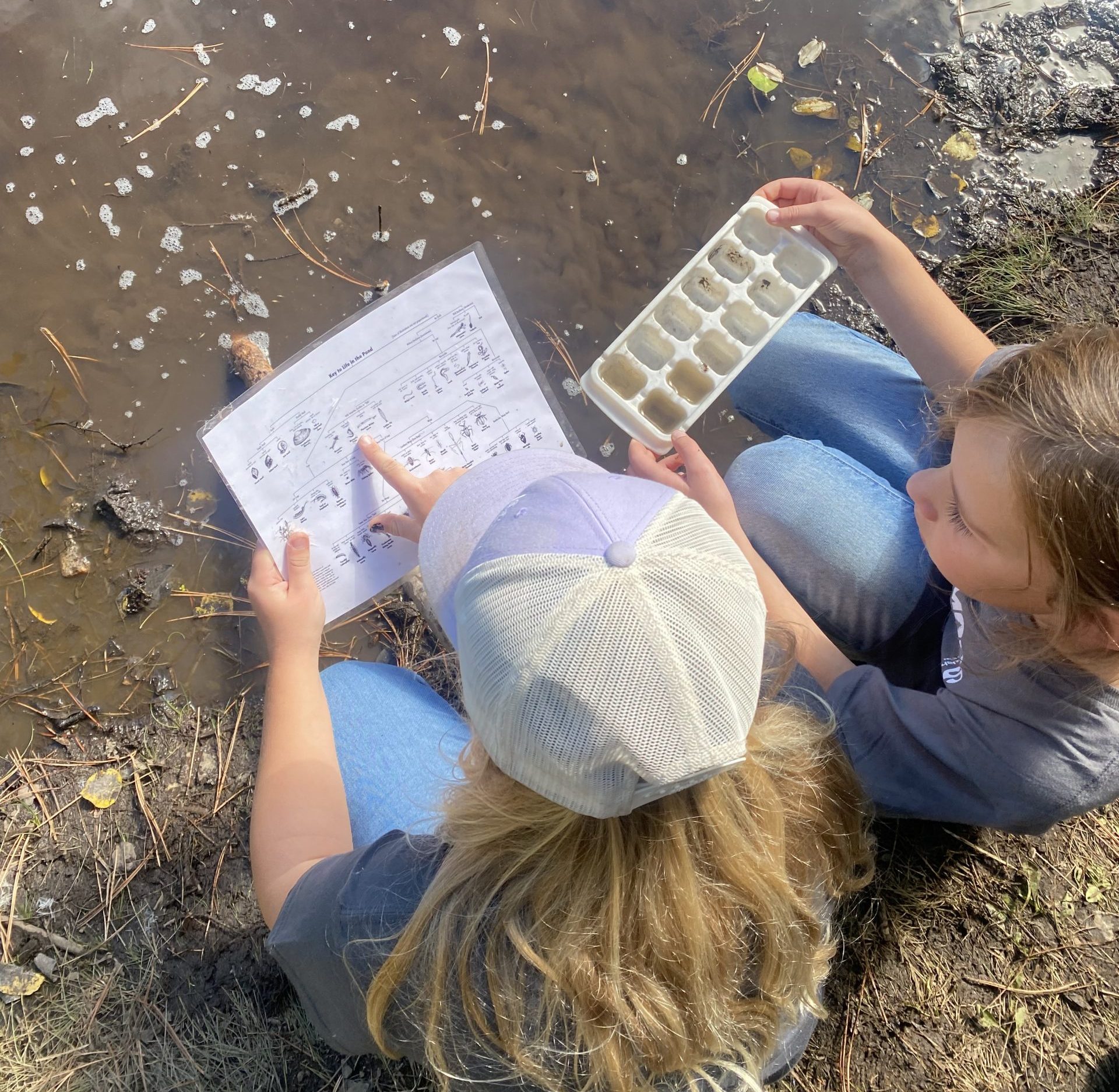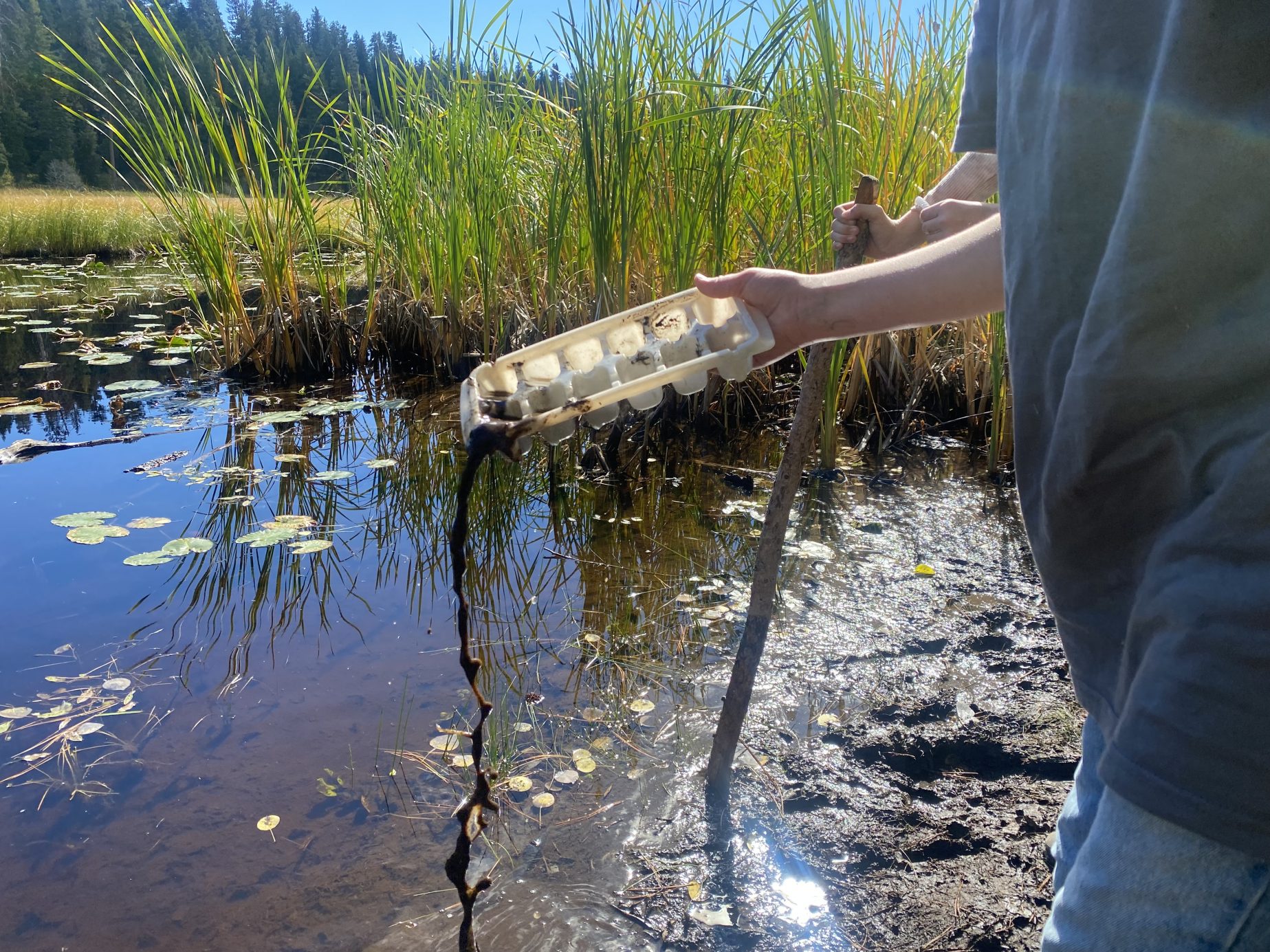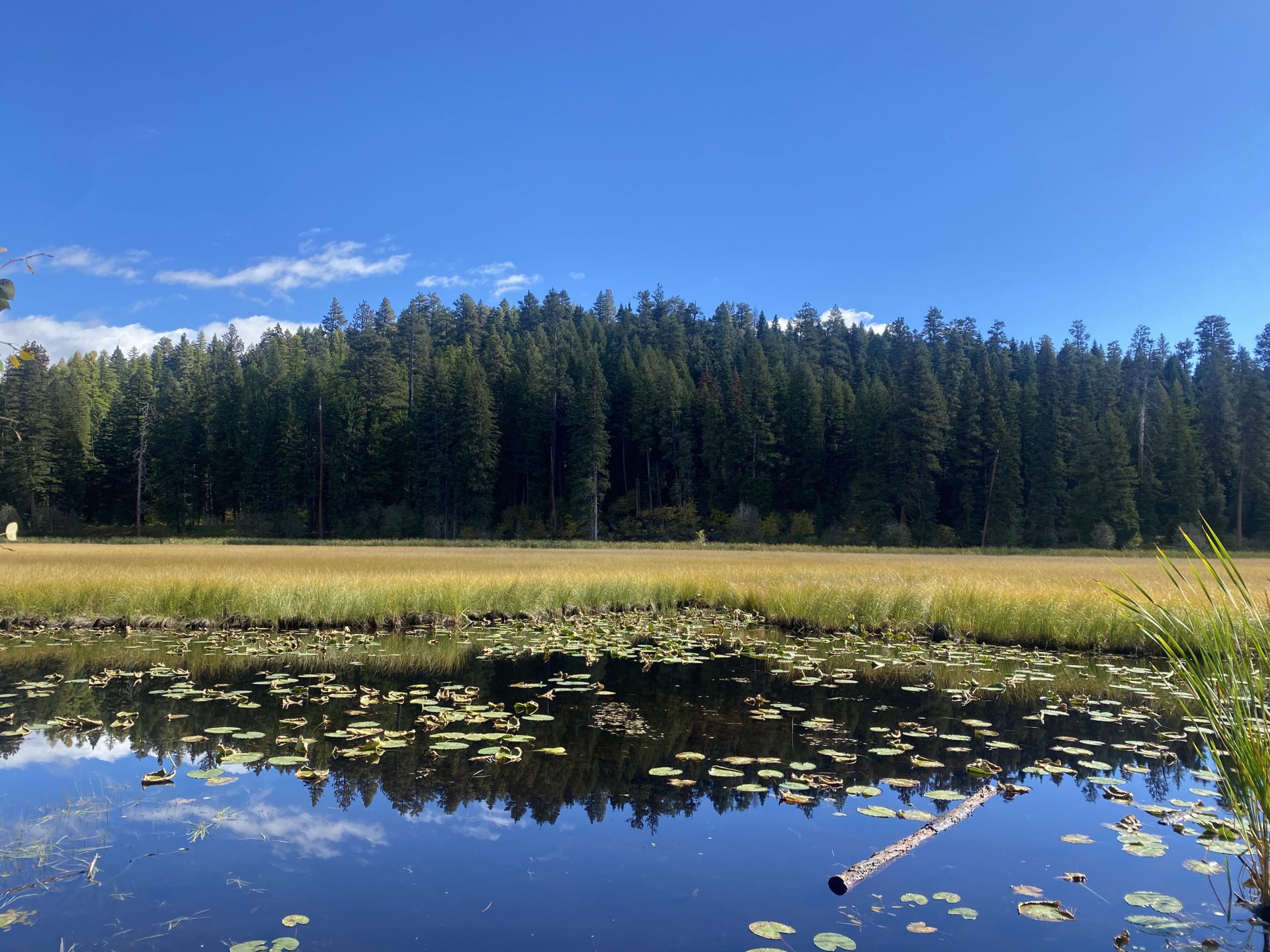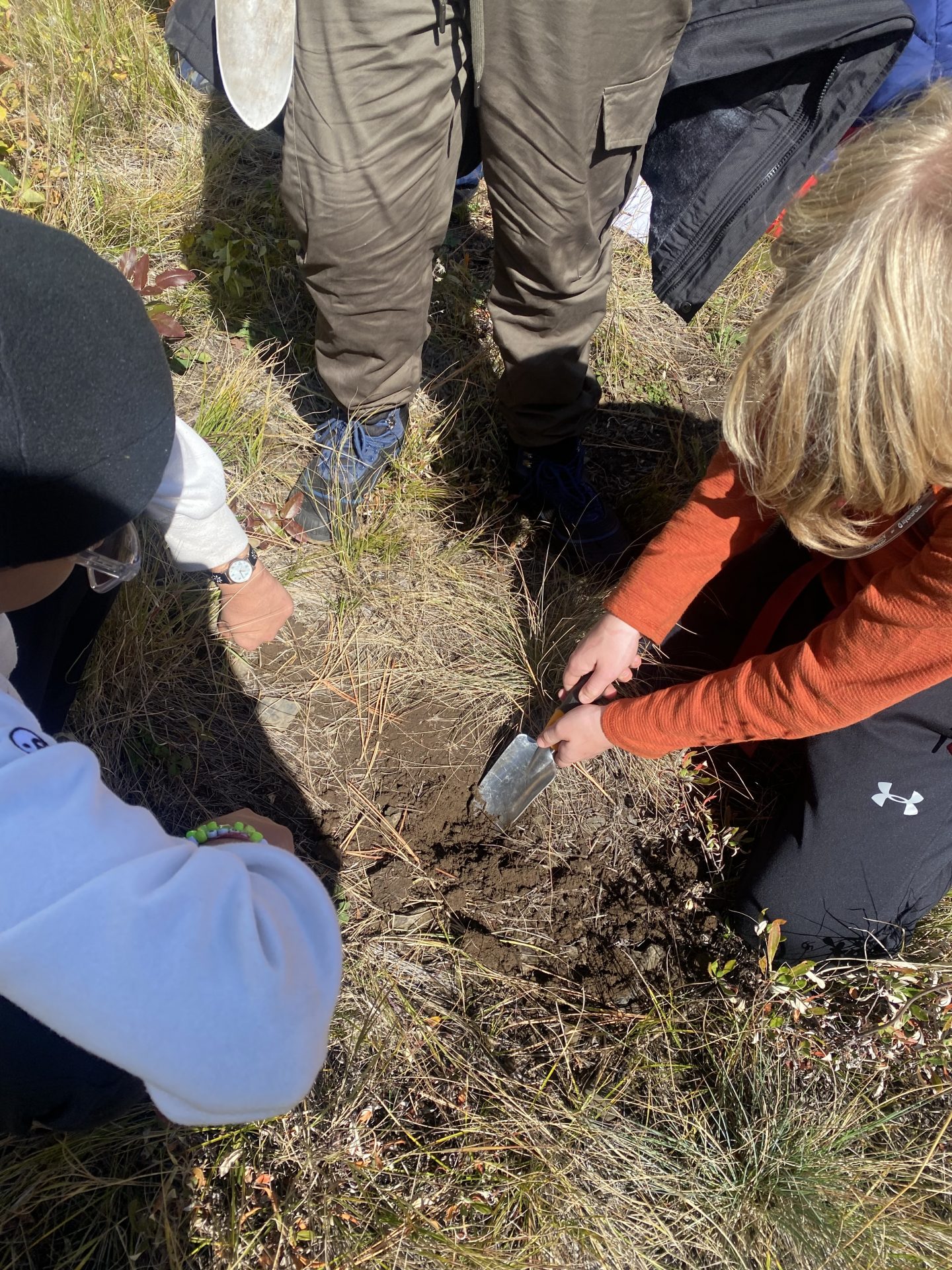Treasure Valley sixth-graders excitedly wandered through the fall foliage of the Ponderosa State Park Wednesday, searching for crickets and frogs in the muddy water. Wading into the lily pads, they pulled out their logbooks and laminated charts to examine the ecology around them.
“I think that’s an ant, but it could be this,” said one girl, pointing to an insect diagram. “We’re learning our outside skills,” she told EdNews. “And trying not to get sucked into the mud.”
“I love digging!” exclaimed a boy from a few feet over, his hands buried. “I like getting my hands dirty!”
That’s just a glimpse of one week at the McCall Outdoor Science School (MOSS), a University of Idaho program that serves K-12 students through hands-on science education.
From Oct. 2-6, students from Boise’s Future Public School and Meridian’s Project Impact STEM Academy headed to the McCall field campus to apply their classroom knowledge to the great outdoors.
Led by a team of University of Idaho graduate students, the middle schoolers formed questions about the world around them, and used science to find the answers — they breathed the fresh air, worked with the earth and together, improved their scientific literacy.
Immersive experience expands the idea of who can be a scientist
When most students arrive at MOSS, they’re used to learning about science in a standard classroom. But MOSS bucks the traditional setting, trading in worksheets and fluorescent lighting for field work under the sun.
Students stay in yurts, eat locally sourced meals and immerse themselves in the natural world around them. They develop their own research ideas, work with a team to answer scientific questions and apply their classroom knowledge to the real world.
By encouraging students to engage with each other and the world around them, MOSS hopes to push the limits on who can be a scientist.
“Who can be a scientist? Who is able to engage in that process?” inquired Beth Kovechar, K-12 Program Development Coordinator for MOSS. “It’s not just fancy professors. We can all make observations and connections between what we’re seeing, and then contribute to the community and based on those observations.”
“Science isn’t just for ‘smart kids,'” added Gary Thompson, MOSS’s Marketing and Leadership Coordinator.
That attitude has a huge impact on kids, Kovechar continued — especially kids who don’t typically thrive in traditional classroom settings.
“They go out, explore, make observations and work together with their classmates, and they do so knowing that distractions are all around, and that’s the point,” Kovechar said. “In a classroom setting, those types of distractions are seen as maybe detrimental to learning, whereas here, it really adds to the learning. They thrive really well here because they can get in the mud, look at bugs and do all the things they’re normally not supposed to do.”
And the kids take that to heart.
In the field, the sixth graders were invested in the research.
They identified insects and got their hands dirty. They dug holes and stuck probes into the ground to analyze the soil temperature and makeup.
They became scientists.
Students of all ages learn together
An extension of the University of Idaho, MOSS doubles as a graduate program.
Graduate students studying Environmental Education and Science Communication live, teach and learn at the McCall field campus. They lead the daily lesson plans, and every week, guide their young counterparts through the scientific inquiry process and through field work. After 10.5 months at MOSS, they’ll receive their masters of natural resources degrees.
This allows students to put what they’re learning in the classroom — whether that’s pedagogical styles, research methods or science literacy — into practice immediately.
“It’s really rewarding to be able to learn teaching strategies in class and then be able to apply it almost immediately the next week,” said one graduate student at MOSS. “And then the next week we review it, so there’s immediate feedback, which is really awesome. It’s really nice to have that intentional time to digest and reflect and go back over everything we’ve done.”
Another student, a former classroom teacher, said that MOSS has allowed him to expand his idea of what education can look like.
“Outdoor education has been a really interesting and fun challenge to dive into,” he said. “To be out here with nature as your classroom is just wildly awesome. It’s full of opportunities. We’re given a lot of space to try things and it’s really rewarding to get to try those things with students who are up here to have a positive education experience.”
The grad students incorporate different ways of learning into their lesson plans. They explore different scientific theories and ways of working with the land. MOSS has cultivated partnerships with the Nez Perce and Shoshone-Bannock tribes to bring indigenous knowledge to the McCall campus.
Kochevar, a MOSS graduate, said watching the graduate students and middle school students learning and exploring their environment together is powerful.
“There’s a genuine and authentic piece that comes with that,” Kochevar said. “When grad students are starting out, they feel like they need to know everything and be able to explain all the concepts in depth with students. But really, we’re just asking them to learn together with the young people, ask questions and explore those questions and observations together to build a holistic understanding of this place.”
MOSS’s reach extends beyond the Ponderosa
Every student, Kovechar says, deserves to experience what happens at MOSS.
But that isn’t always possible.
MOSS is a paid experience, and financial barriers prevent many school districts from signing up. Plus, it can be difficult for teachers and students to take a week away from the classroom, even if they’re still learning.
So, MOSS leaders are working to expand opportunities and remove barriers for students who might not have the opportunity to join, especially those in low-income communities and groups who are typically underrepresented in STEM fields.
“We’re trying to be creative with ways for other teachers and schools and kiddos to participate,” Kovechar said. She said MOSS is considering a different pricing structure, as well as different outreach programs that would allow the graduate students to do site visits to schools and districts with local green spaces nearby.
“If you’re a privately funded school, then you have less constraints and more resources. If you’re in public education, you have more constraints and less resources,” she continued. “We’re finding ways to…alleviate some of those barriers and plan inclusive programs for everybody.”




